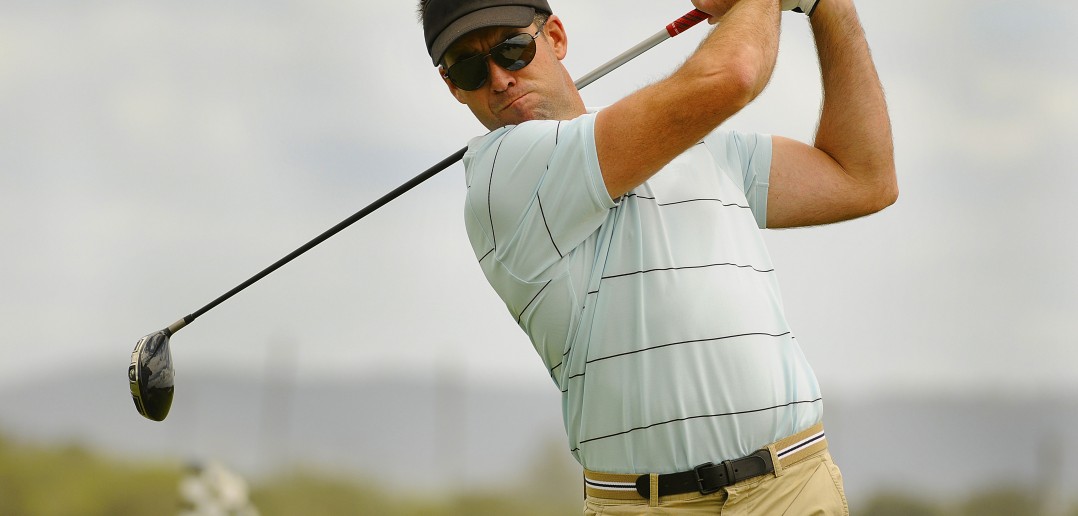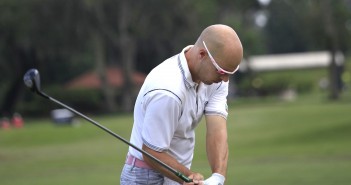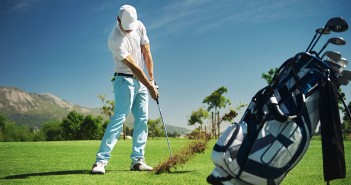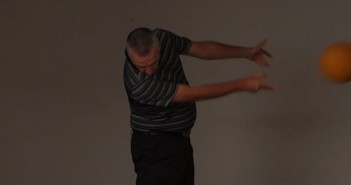If you appear to have fast hips and you struggle to attack the ball from the inside, the chances are that you’re mistakenly trying to generate power in your golf swing with your arms and shoulders.
When you initiate the golf swing with your upper body, the angular momentum of the golf club forces the club head out away from your body on the downswing. Once initiated, this angular momentum provides resistance through inertia against your body, preventing you from moving forward toward the target.
When you do this, you might appear to have fast hips. It looks like your hips are rotating too quickly, which forces the club out and away from your body as the trail shoulder moves forward toward the ball, creating an over-the-top, slice-generating swing plane.
Often, an instructor will see this and tell you to slow down your hips. Actually, the problem is not that your hips are turning too fast but that you are using your arms to generate the power and not using your legs and hips to shift forward toward the target.
When you learn to use your legs to push into the ground, your apparently fast-rotating hips will slow down automatically through impact, and your club head will begin to attack the ball from the inside more easily. This deceleration of your lower body also allows for stabilisation and the efficient transfer of energy up the kinetic chain all the way to the club head.
Players who appear to have fast hips and struggle to attack the ball from the inside are rotating predominately through the joints in the lower back with minimal rotation actually occurring at the hip joint. This lower-back-centred movement is especially stressful on the spine and supporting muscles. The wear and tear eventually will lead to pain and possible injury.
Better Players
If you’re a more accomplished player, you may not struggle to attack the ball from the inside, but overly fast hips will cause you to “spin out” of the shot, preventing you from transferring power efficiently up the kinetic chain, and resulting in the occasional shot blocked out right, a pull-hook, or the horrible blocked slice (or “blice”) when the club gets trapped behind your body on the downswing.
Yet again, you need to learn how to properly build power from the ground, to brace and fire your lower body correctly. Using your legs for leverage, pushing into the ground, will stabilise and decelerate your lower body through impact, enabling the power generated by your legs and hips to efficiently transfer up the kinetic chain all the way to the club head.
No matter what your current ability, Golf Loopy will teach you how to move your body most effectively in the golf swing, by using the large muscles in your legs and core, in the correct sequence, for maximum power, accuracy, consistency and safety.
If you have any questions or comments about this or other articles on Golf Loopy, please send us an email.
You May Also Like…
Introduction to the Swing like a Champion System
Overview of a Great Golf Swing, which summarises the correct movements in a great golf swing, and describes how the core muscles help to power and stabilise the golf swing.
Is the Golf Swing Powered by the Arms?
Why is Having the Shoulders “Connected” So Important? Which explains how the shoulders enable the power of the big muscles in your legs and core to be transferred to the golf club.
Golf Anatomy and Kinesiology, a collection of articles describing the roles of the muscles involved in the golf swing.
Core muscles, which describes the muscles that run the length of your trunk and torso.
Gluteal muscles, which describes the “glutes” — the three muscles that make up the buttocks, and how they power the golf swing kinetic chain through the core.
Kinetic Chain, which describes how the different parts of your body act to transfer energy from the ground to the golf ball.




